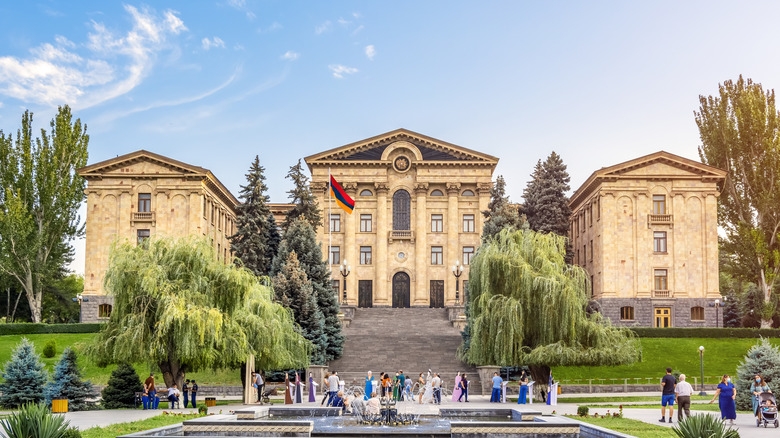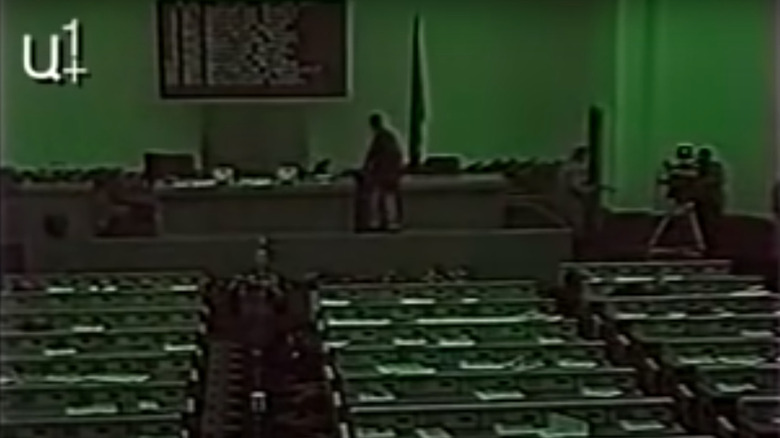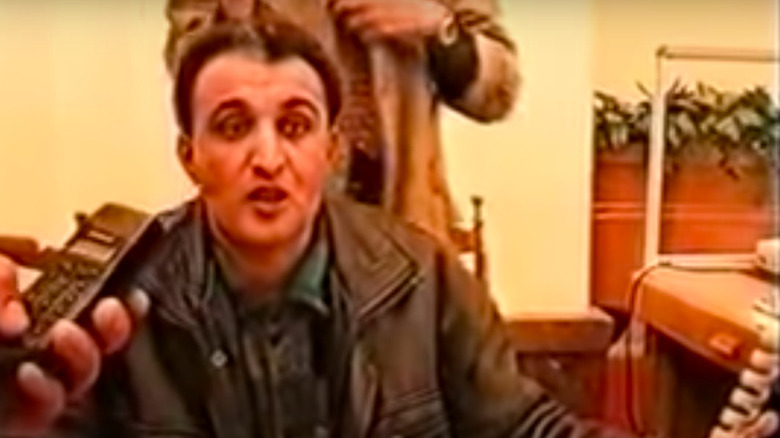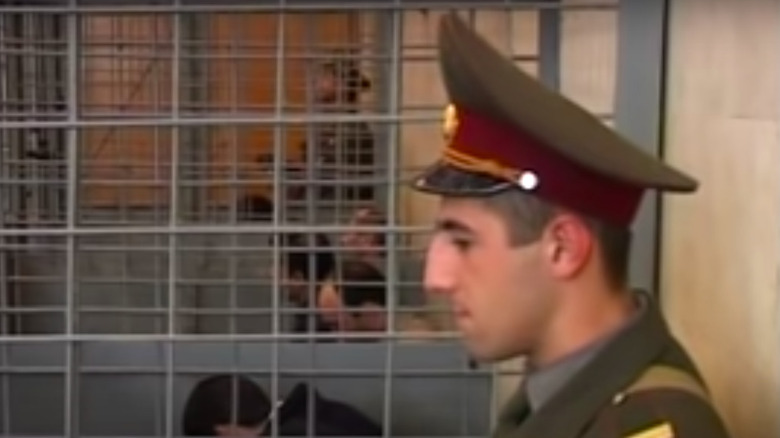What You Didn't Know About The 1999 Armenian Parliament Shooting
In October 1999, residents of the Republic of Armenia listened in horror as a speech being given by Prime Minister Vazgen Sargsyan was cut short by a group of armed men bursting into parliament. The live radio transmission cut out after the shooting started, but for days after the hostage situation was over, people watched the footage of the attack played over and over again on television, per RFERL.
While the hostage situation lasted less than a day, it had a lasting effect on Armenian politics. And for many, the distrust and uncertainty caused by the attack continues to linger. After lengthy investigations and a hasty trial, many remain convinced that the true motivations behind the attack have yet to be revealed. Although there have been plans to reinvestigate the attack, after the 2020 COVID-19 crisis and the Second Nagorno-Karabakh War, it's unlikely that the reopened investigation will take priority.
Murder in the parliament
On October 27, 1999, a group of eight armed men burst into the Armenian Parliament building during a question and answer session and opened fire into the main chamber, per EVN Report. Led by Nairi Hunanyan, a former journalist and former member of the Dashnaktsutyun (also known as the Armenian Revolutionary Federation), the gunmen targeted Prime Minister Vazgen Sargsyan. Elsewhere, Speaker of Parliament Karen Demirchyan, Members of Parliament Mikayel Kotanyan, Armenak Armenakyan and Henrik Abrahamyan, Deputy Speakers Yuri Bakhshyan and Ruben Miroyan, and Deputy Prime Minister Leonard Petrosyan were also killed. About 50 people survived the attack and were taken hostage, BBC reports.
Per BBC, a reporter who was present said the gunmen claimed a coup and that "they were going to punish the authorities for what they did to the nation," claiming that "it is time to get rid of the bloodsuckers who are drinking our blood." However, the gunmen claimed that Sargsyan had been their only target and that all other deaths "were accidental," per The New York Times.
After a series of negotiations through the night that included a discreet meeting between President Robert Kocharyan and Hunanyan, the gunmen surrendered on the condition that they would be granted a fair trial and not given the death penalty. On the morning of October 28, the gunmen released the hostages and were taken in for questioning by the police.
The trial
After over a year of investigations, the trial against Nairi Hunanyan, Karen Hunanyan, Vram Galstyan, Derenik Ejanyan, Eduard Grigoryan, Ashot Knyazyan, and Hamlet Stepanyan began in January 2001. Norayr Yeghiazaryan was also part of the group of gunmen but was found electrocuted in his cell in 2000 before the trial started, according to the EVN Report.
PanArmenian reports that the trial lasted three years but was ultimately never able to resolve whether or not the gunmen were acting on orders. However, Nairi Hunanyan repeatedly insisted that he wasn't taking orders and reportedly started planning the attack after being rejected for a position on the president's staff. RFERL also reports that the trial was unable to reveal how the gunmen were able to get an accreditation to parliament or get their weapons into the chamber.
Meanwhile, the testimonies revealed that the gunmen hoped to force parliament to dissolve and launch new elections, with Nairi Hunanyan assuming leadership until the results of the election came in. However, according to Eurasianet, he stated that some of his testimony was "artificial and extracted by violence." In the end, everyone was sentenced to life imprisonment except for Stepanyan, who was given 14 years. However, Stepanyan ended up dying in prison in 2010, per Azatutyun.
Legacy of the parliament shooting
During both the investigation and the trial, the Armenian public and political establishment were split. Some believed that both the investigation and trial occurred in a lawful manner, while others believed that the true organizers of the crime were never discovered, Eurasianet reports. Many different theories were suggested as to the potential instigator of the attack, but after the trial, many were left with more questions than answers. Since the attack, many have raised different theories, with Russian defector Alexander Litvinenko alleging that the shooting was organized by the GRU, Russia's foreign intelligence agency (via Azatutyun).
With the public unsure of what to make of the attack and its subsequent aftermath, the political establishment didn't fare much better. Per Hetq, the Unity Bloc coalition (Miasnutiun) in parliament collapsed, and President Kocharyan was able to consolidate his power. In "Family of Shadows," Garin Hovannisian writes that although there's little evidence that Kocharyan was complicit in the 1999 parliament attack, "it was clear that he emerged from the bloodbath with absolute power." At the time, there was also a potential peace agreement regarding Artsakh, but according to Reliefweb, the 1999 shooting "brought the process to a dead end."
JAM News reports that in 2019, the Armenian Prosecutor General's office decided to reopen the investigation into the organizers of the 1999 parliament attack after Anahit Bakhshyan, the widow of Speaker Bakhshyan, pushed for a relaunch of the investigation.



